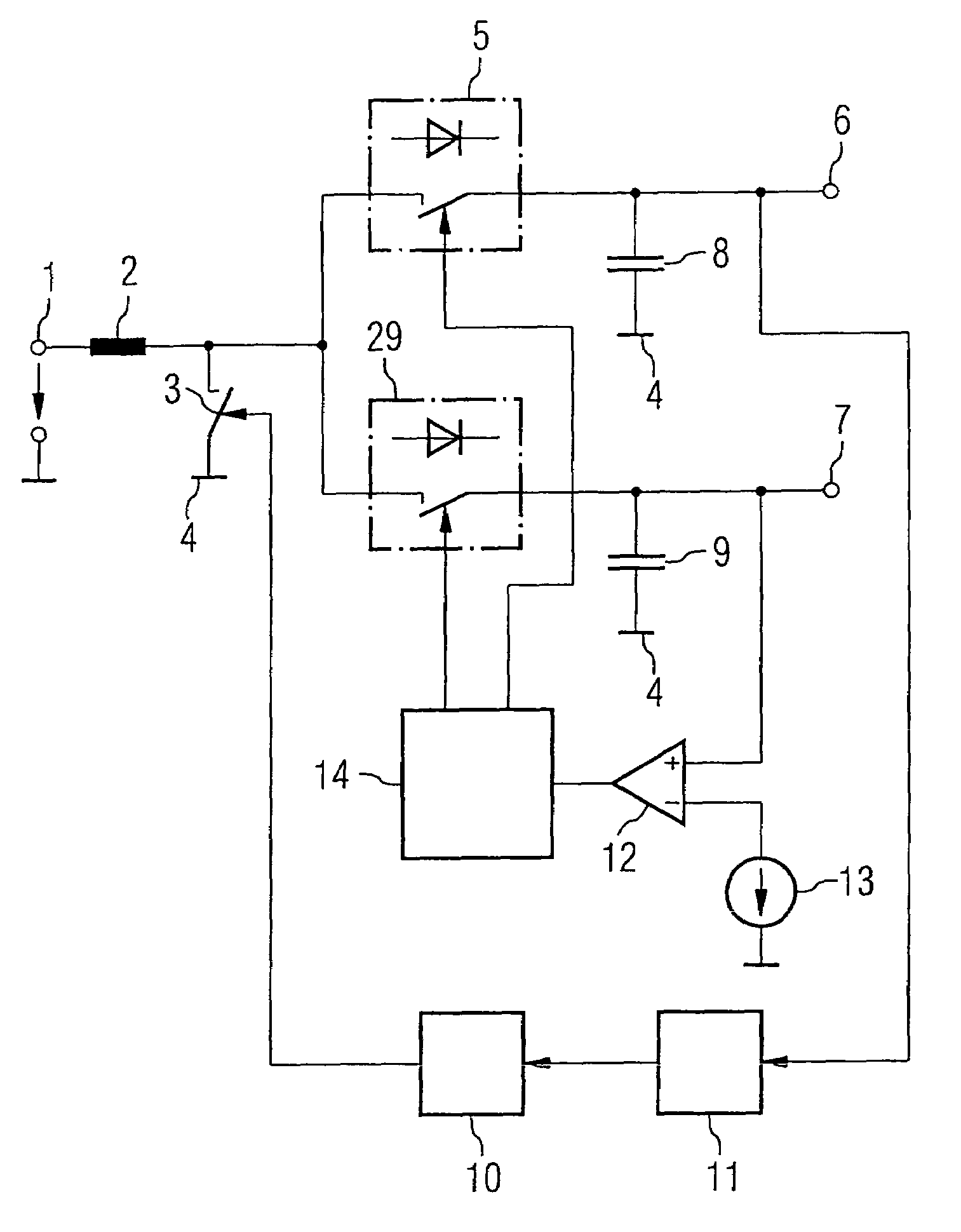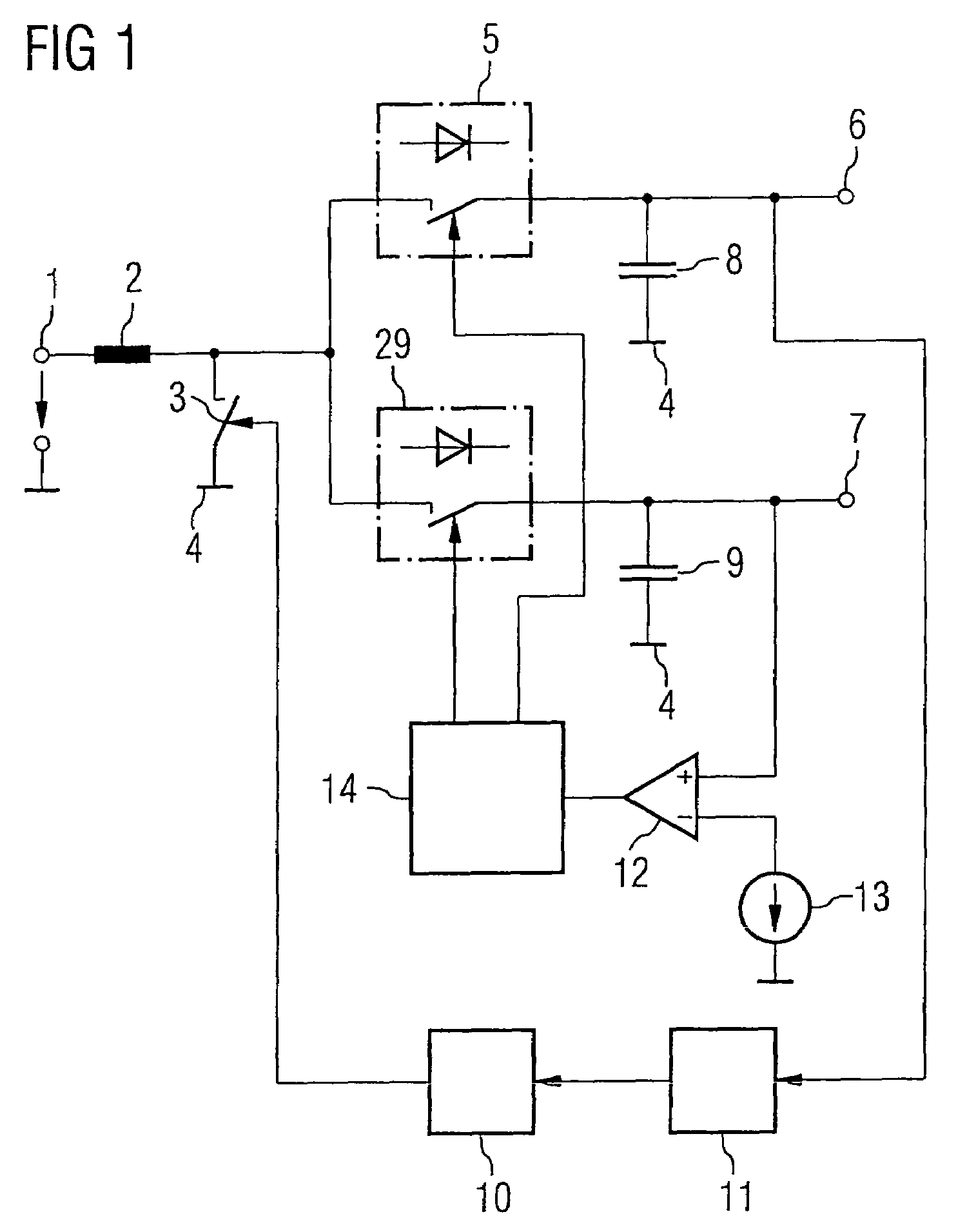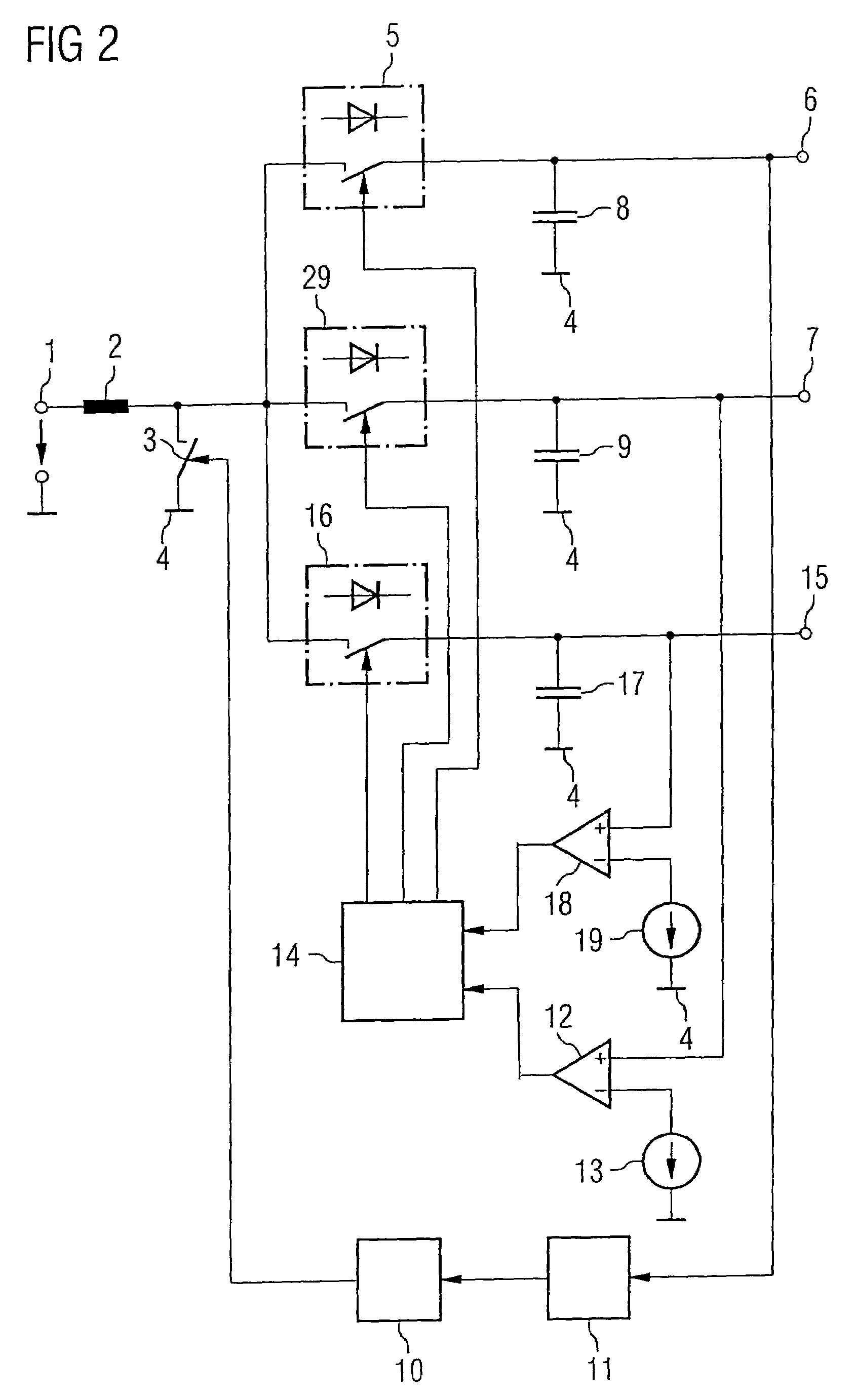DC voltage converter and method for converting a DC voltage
a voltage converter and dc technology, applied in the direction of electric variable regulation, process and machine control, instruments, etc., can solve the problem of unsatisfactory crossover influence (also referred to as crosstalk) between the various outputs, and achieve the effect of reducing nois
- Summary
- Abstract
- Description
- Claims
- Application Information
AI Technical Summary
Benefits of technology
Problems solved by technology
Method used
Image
Examples
Embodiment Construction
[0045]FIG. 1 shows a DC voltage converter, which is suited to converting a DC voltage that is applied on the input side into two different output DC voltages. In this case, an input 1 for supplying a DC voltage is provided, an energy store 2 in the form of a coil being connected to the input. The free terminal of the energy store 2 is connected to a reference potential terminal 4 via a switch 3. The circuit node that is formed between the energy store 2 and the switch 3 is furthermore connected to a first output 6 via a first means for influencing the voltage magnitude 5 and to a second output 7 via a second means for influencing the voltage magnitude 29. The first and second outputs 6, 7 are each designed to provide an output voltage in the form of a DC voltage. The first and second outputs 6, 7 are connected to the reference potential terminal 4 via a respective charge store 8, 9 that is in the form of a capacitor. The switches 5, 29 have a diode function in order to make it possi...
PUM
 Login to View More
Login to View More Abstract
Description
Claims
Application Information
 Login to View More
Login to View More - R&D
- Intellectual Property
- Life Sciences
- Materials
- Tech Scout
- Unparalleled Data Quality
- Higher Quality Content
- 60% Fewer Hallucinations
Browse by: Latest US Patents, China's latest patents, Technical Efficacy Thesaurus, Application Domain, Technology Topic, Popular Technical Reports.
© 2025 PatSnap. All rights reserved.Legal|Privacy policy|Modern Slavery Act Transparency Statement|Sitemap|About US| Contact US: help@patsnap.com



